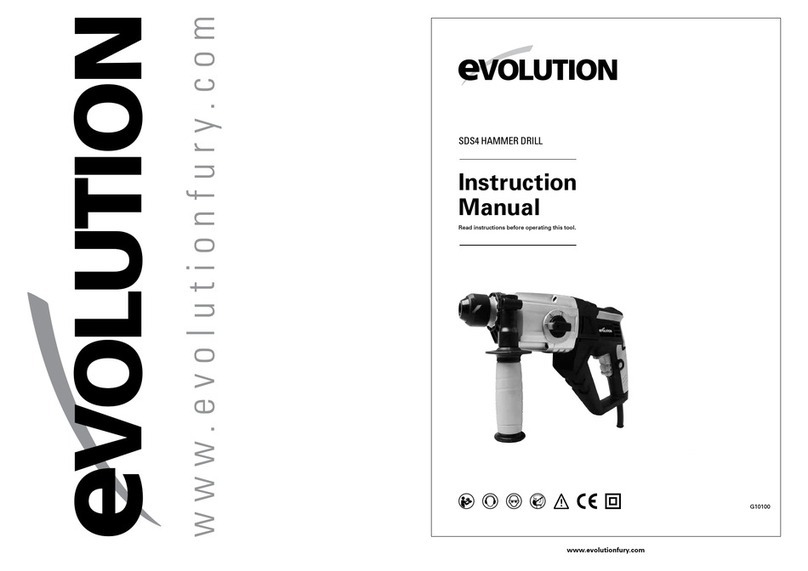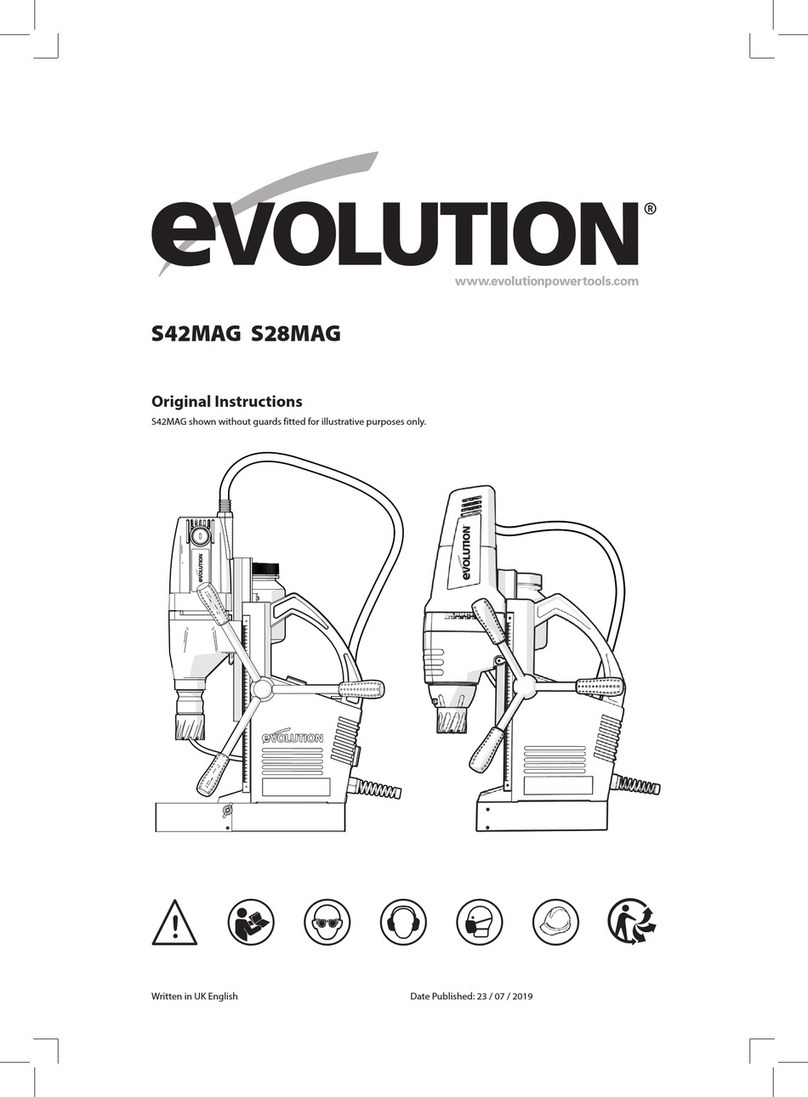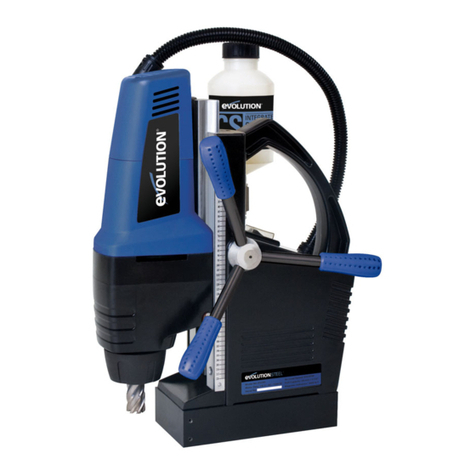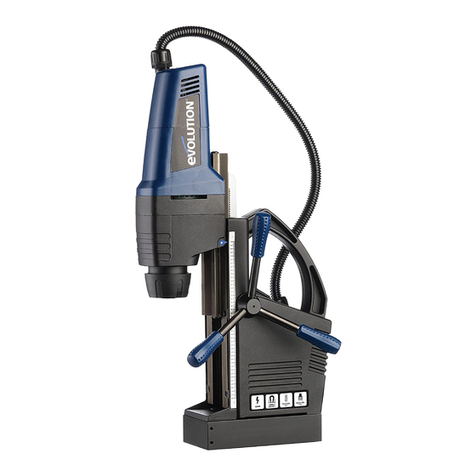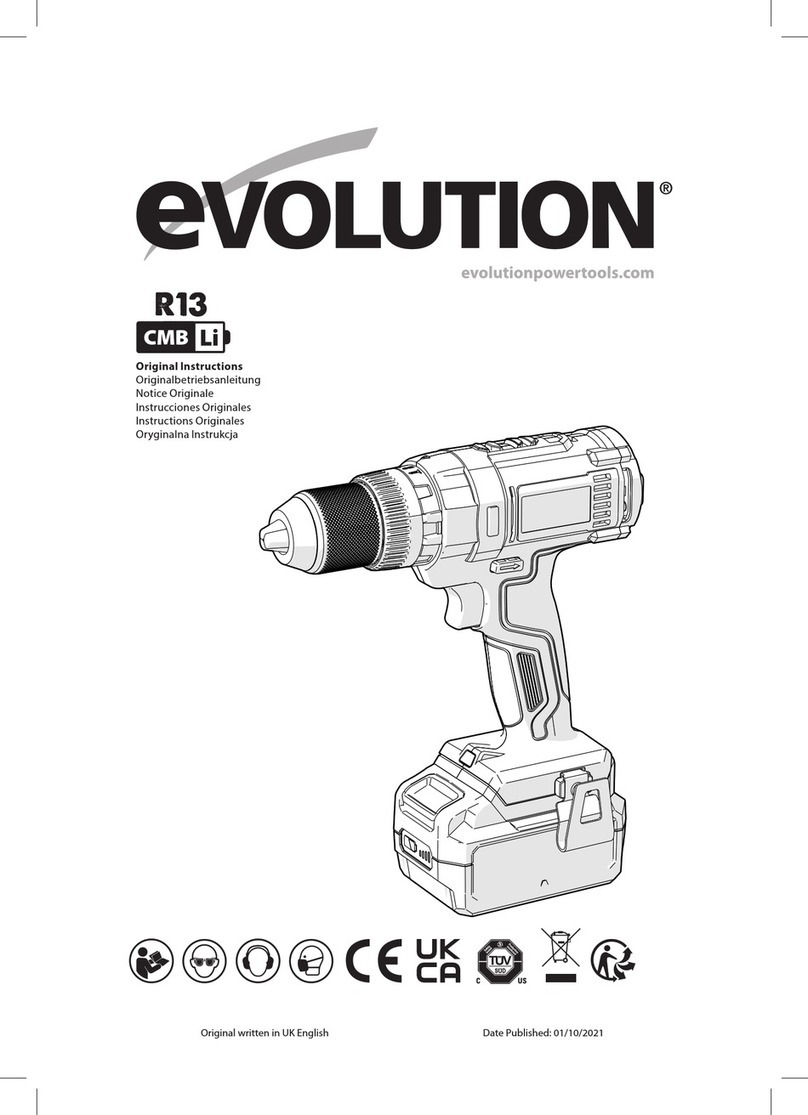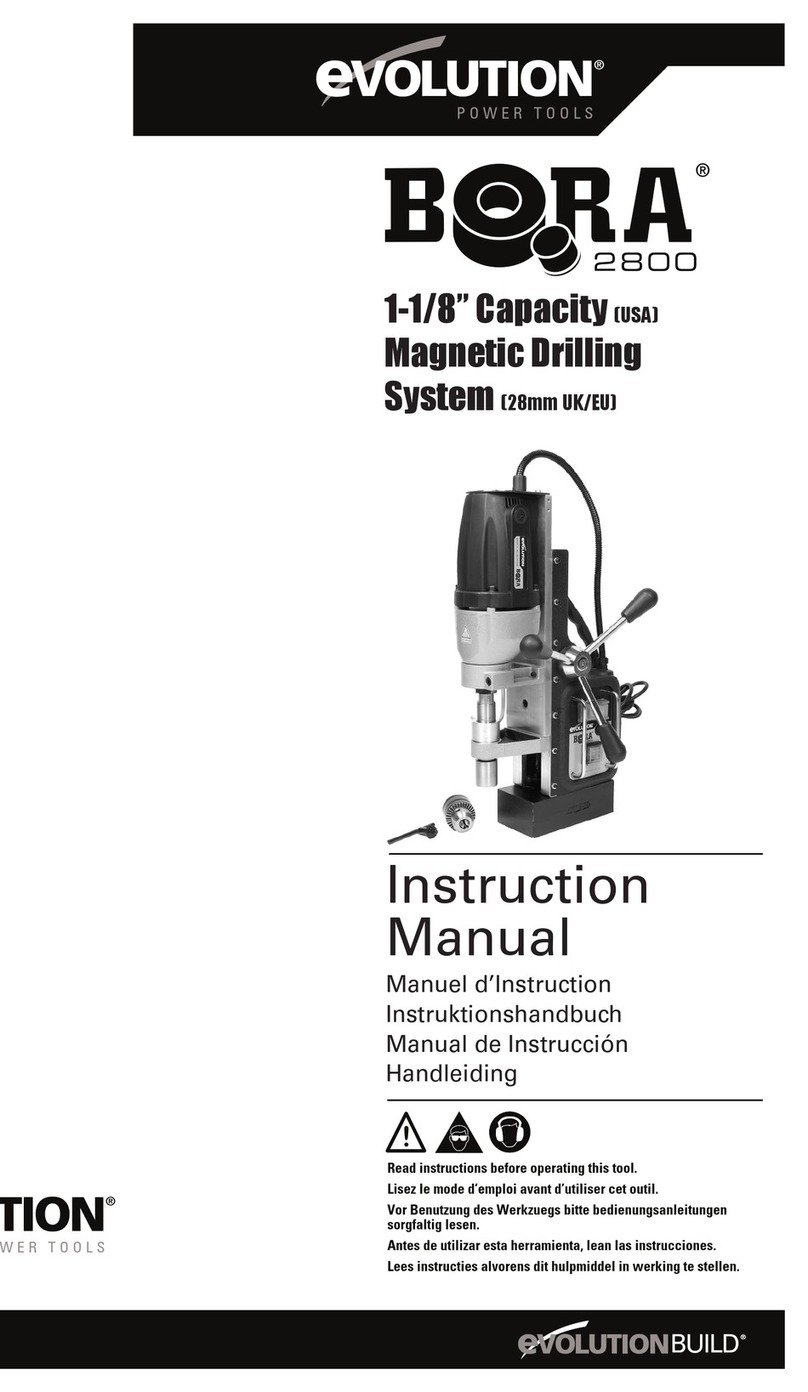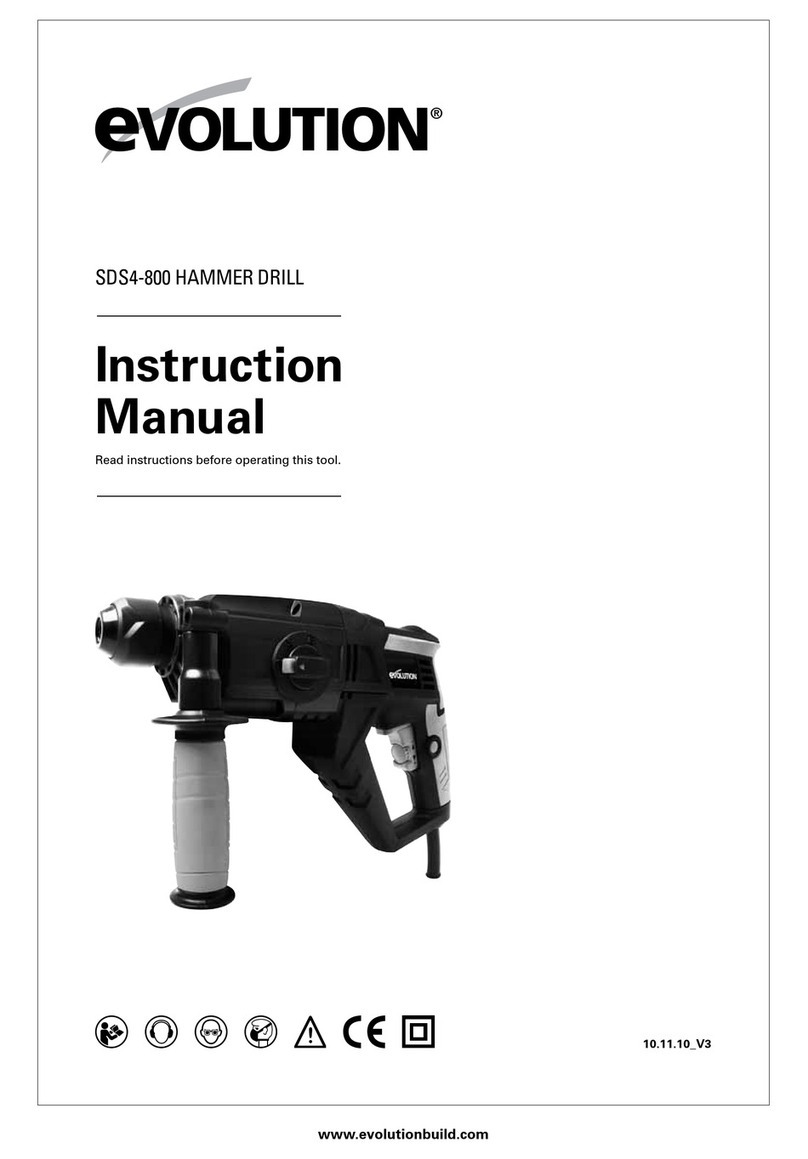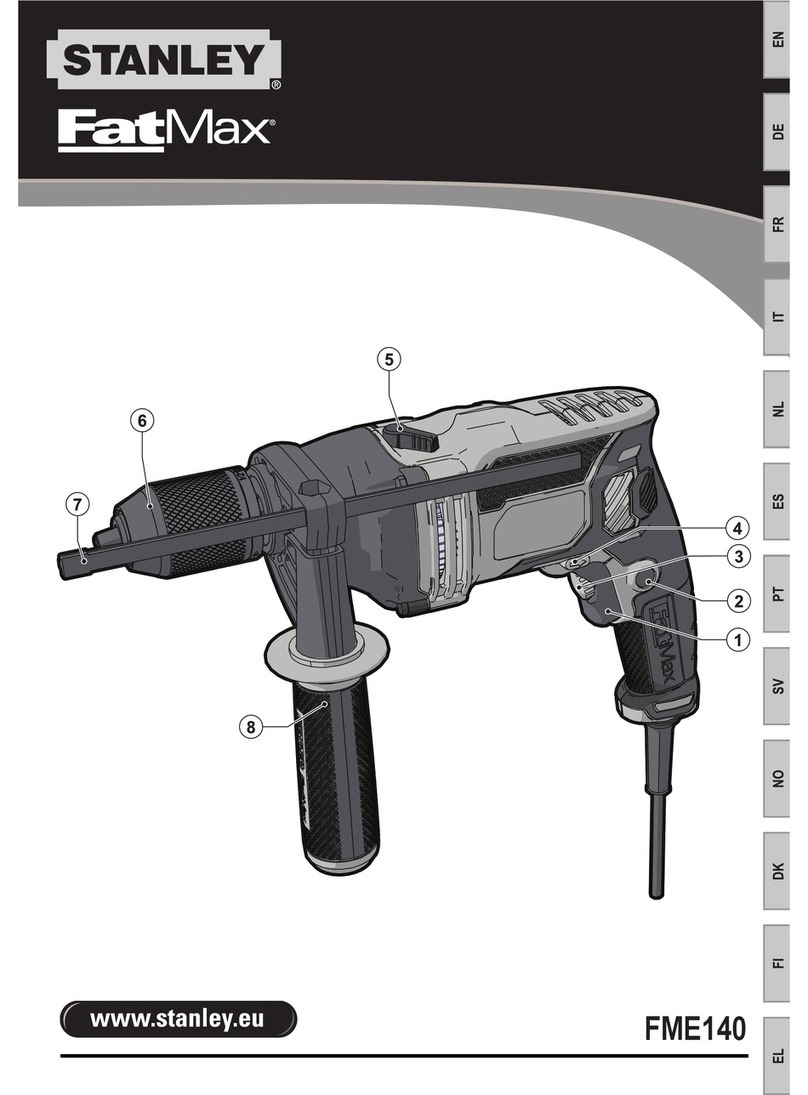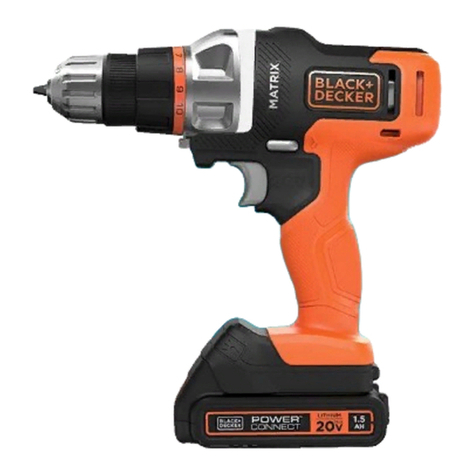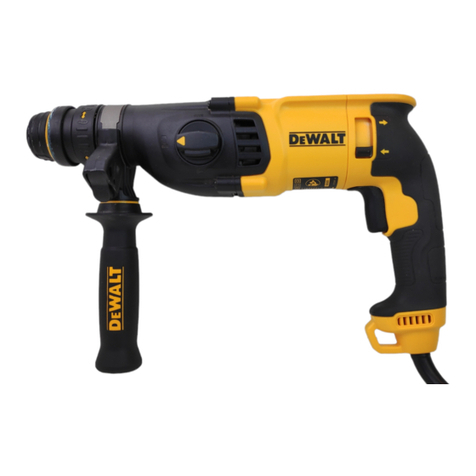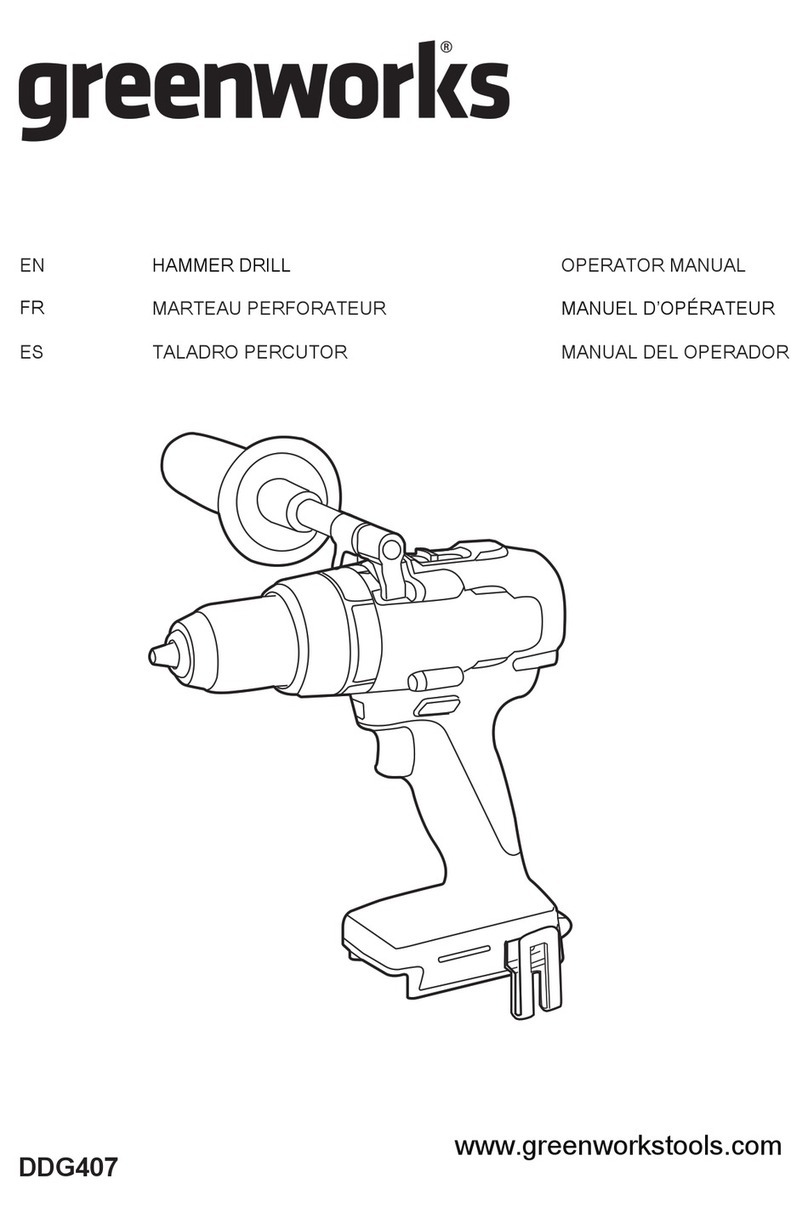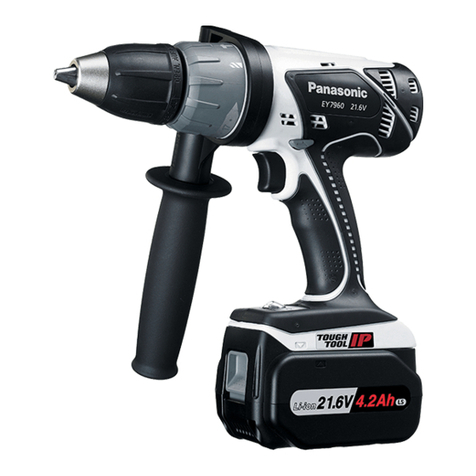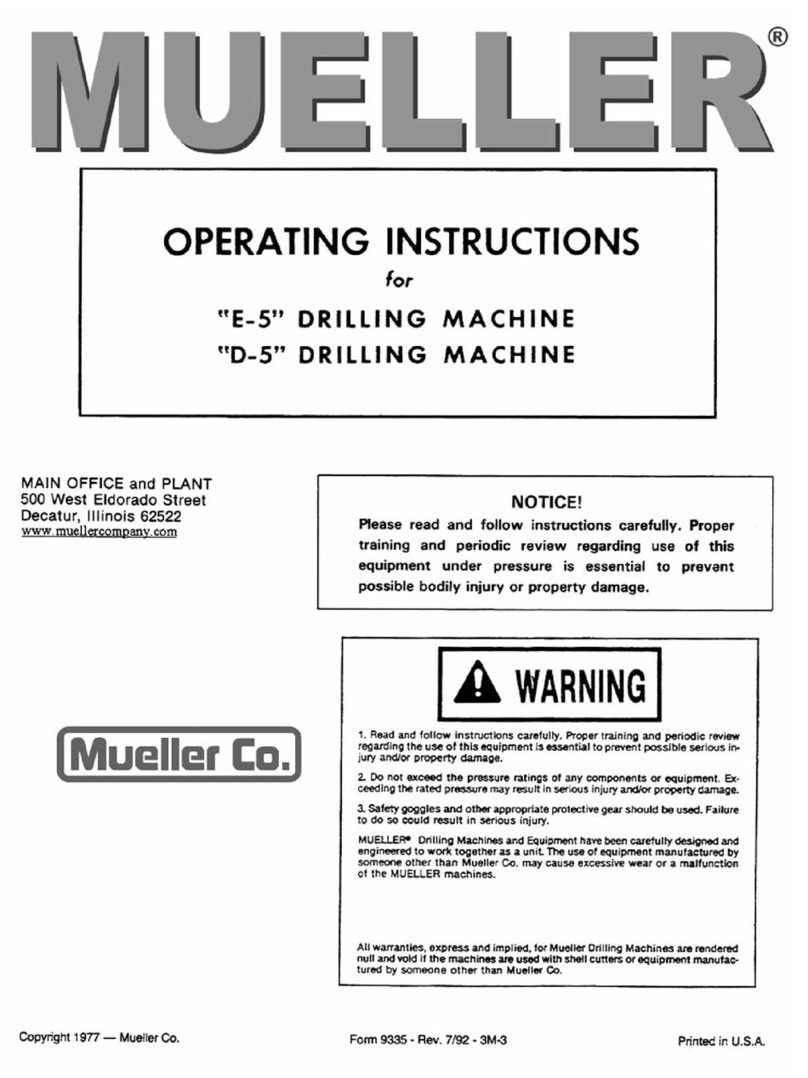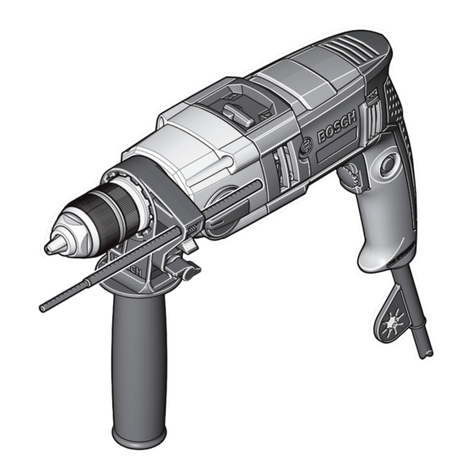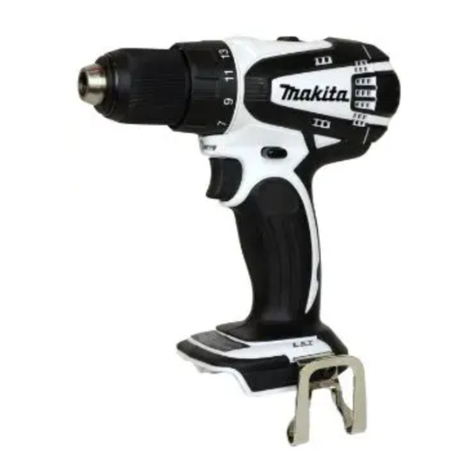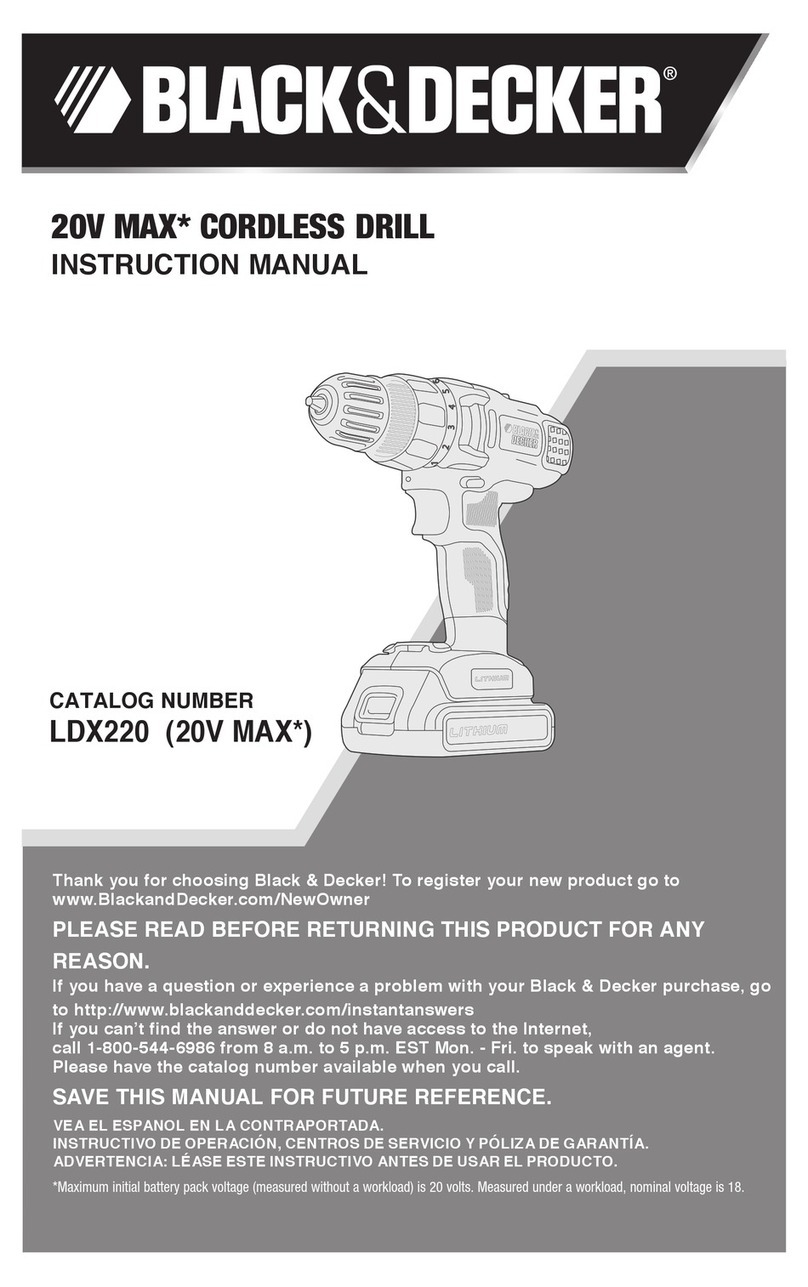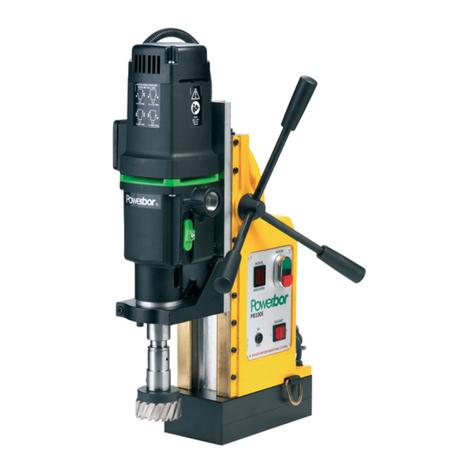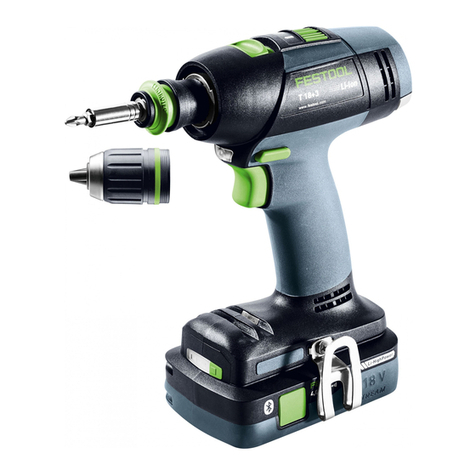www.evolutionsteel.com
5
5. Store idle tools. When not in use, tools should
be stored in a dry locked-up place, out of reach of
children.
6. Do not force the tool. It will do the job better and
safer at the rate for which it was intended.
7. Use the right tool. Do not force small tools to
do the job of a heavy duty tool. Do not use tools
for purposes not intended; for example do not use
circular saws to cut tree limbs or logs.
8. Dress properly. Do not wear loose clothing or
jewellery, they can be caught in moving parts.
Non-skid footwear is recommended when working
outdoors. Wear protective hair covering to contain
long hair.
9. Use protective equipment. Use safety glasses. Use
face or dust mask if working operations create dust.
10. Connect dust extraction equipment. If the tool
is provided for the connection of dust extraction
and collection equipment, ensure these are
connected and properly used.
11. Do not abuse the cord. Never yank the cord to
disconnect it from the socket. Keep the cord away
from heat, oil and sharp edges.
12. Secure work. Where possible, use clamps or
a vice to hold the work. It’s much safer than using
your hand.
13. Don’t over reach. Keep proper footing and
balance at all times.
14. Maintain tools with care. Keep cutting tools
sharp and clean for better and safer performance.
Follow instructions for lubricating and changing
accessories. Inspect tool cords periodically and,
if damaged, have them repaired by an authorised
service facility. Inspect extension cord periodically
and replace immediately if damaged. Keep handles
dry, clean and free from oil and grease.
15. Disconnect tools. When not in use, before any
servicing and when changing accessories such
as blades, bits, cutters, disconnect tool from the
power source
16. Remove adjusting keys and spanners. Form
the habit of checking to see the keys and adjusting
spanners are removed from the tool before turning it on.
17. Avoid unintentional starting. Ensure switch is in
“off” position when plugging in.
18. Use outdoor extension leads. When the tool is
used outdoors, use only extension cords intended
for outdoor use and so marked.
19. Stay alert. Watch what you are doing, use
common sense and do not operate the tool when
you are tired.
20. Check damaged parts. Before further use of
tool, it should be carefully checked to determine
that it will operate properly and perform the
intended function. Check for alignment of moving
parts, mountings and any other components that
may affect its operation. A guard or other part that
is damaged should be properly repaired or replaced
by an authorised service centre unless otherwise
indicated in this instruction manual. Have defective
switches replaced by an authorised service centre.
Do not use the tool if the switch does not turn it
on and off.
21. WARNING. The use of any accessory or
attachment other than one recommended in this
instruction manual may present a risk of personal injury.
22. Have your tool repaired by a qualified person.
This electric tool complies with relevant safety
rules. Repairs should only be carried out by
qualified persons using original spare parts.
Otherwise this may result in considerable danger
to the user.
HEALTH ADVICE GB
WARNING: When drilling, sanding, sawing or
grinding, dust particles will be produced. In some
instances, depending on the materials you are
working with, this dust can be particularly harmful
to you (e.g. lead from old gloss paint).You are
advised to consider the risks associated with the
materials you are working with and to reduce the
risk of exposure.
You should:
• Work in a well-ventilated area.
• Work with approved safety equipment, such as
dust masks that are specially designed to filter
microscopic particles.
